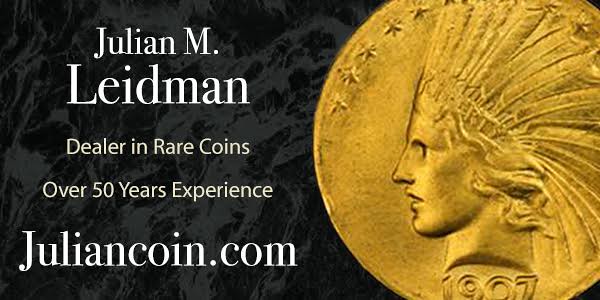
PREV ARTICLE
NEXT ARTICLE
FULL ISSUE
PREV FULL ISSUE
THE GREAT PRECIOUS METALS BOOM AND BUSTMartin Kaplan pointed out this blog post by Jeff Garrett on the NGC site. It discusses how gold prices affect the coin industry, and along the way he highlights the history of the precious metals boom in the late 1970s. Here's an excerpt. -Editor By the late 1970s inflation had become the No. 1 problem in the United States. The numismatic world was about to change almost overnight! Gold and silver prices began a sharp rise in the middle part of 1979, and by January 1980, prices had peaked to over $850 for gold and nearly $50 for silver. Famously, the Hunt Brothers had attempted to corner the market for silver. Prices nearly quadrupled in a few months. This began one of the most exciting booms to ever hit the numismatic world. Anyone with a coin shop now was making fantastic sums of money. Most were greeted each morning with lines around the corner of individuals desperate to cash in. The only limit on how much money that could be made was capitalization. Many dealers were out of money by lunchtime. The public was selling anything and everything made of silver. Sterling sets that had been in the family for generations were now headed to the refinery. I still have an incredibly beautiful champagne bucket that I rescued from a shipment. The large crowds of sellers also brought rare coins with them. Coins were now in the spotlight like never before. Incredible collections, coin hoards, and numismatic delicacies were now coming over the counter in record numbers. Many of the great rarities seen today made their first appearance during this time. The unique 1870-S Half Dime was somehow sold over the counter in a Chicago coin shop and later discovered in a junk box. These were truly exciting times in the rare coin market. Unfortunately, the gold and silver boom was very short-lived. By March 1980, silver had fallen to below $11 per ounce again. Obviously, speculation had played a large role in the rise of gold and silver at the time. The numismatic impact of the 1980 gold and silver boom was multi-faceted. Coin prices soared along with metal prices. Many rare coins traded hands for prices that would not be seen again for two decades. The absolute peak was the auction sale of the Garrett (no relation) Collection. Coins were bringing six-figure prices with regularity. Most of the buyers were rare coin dealers who were newly minted millionaires from precious metals trading. This was a very exciting time to be a rare coin dealer. Many of today's household names in the numismatic world were very young, making incredible sums and living large! Like someone who had won the lottery, a few could not handle the newfound wealth and lost it all due to drugs, gambling and a decadent lifestyle. Maybe someday, someone will write a book about this incredible part of numismatic history. It would make a great movie! Like Jeff, I was getting my start in the hobby in the late 70s, but as a collector, not a dealer. I saw those crazy lines outside coin shops. I was new and bewildered, but certainly felt the excitement. I'm sure many of our readers have great stories from those days - let's hear some of them. Where were YOU when the market rose and fell? -Editor To read the complete article, see:

Wayne Homren, Editor The Numismatic Bibliomania Society is a non-profit organization promoting numismatic literature. See our web site at coinbooks.org. To submit items for publication in The E-Sylum, write to the Editor at this address: whomren@gmail.com To subscribe go to: https://my.binhost.com/lists/listinfo/esylum All Rights Reserved. NBS Home Page Contact the NBS webmaster 
|